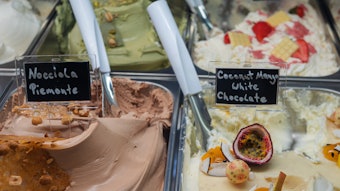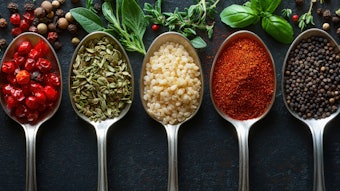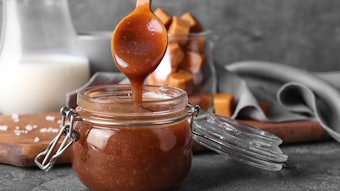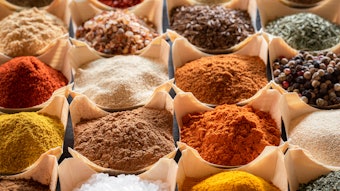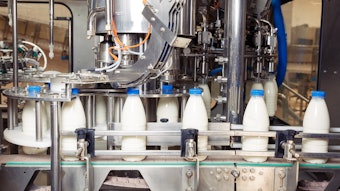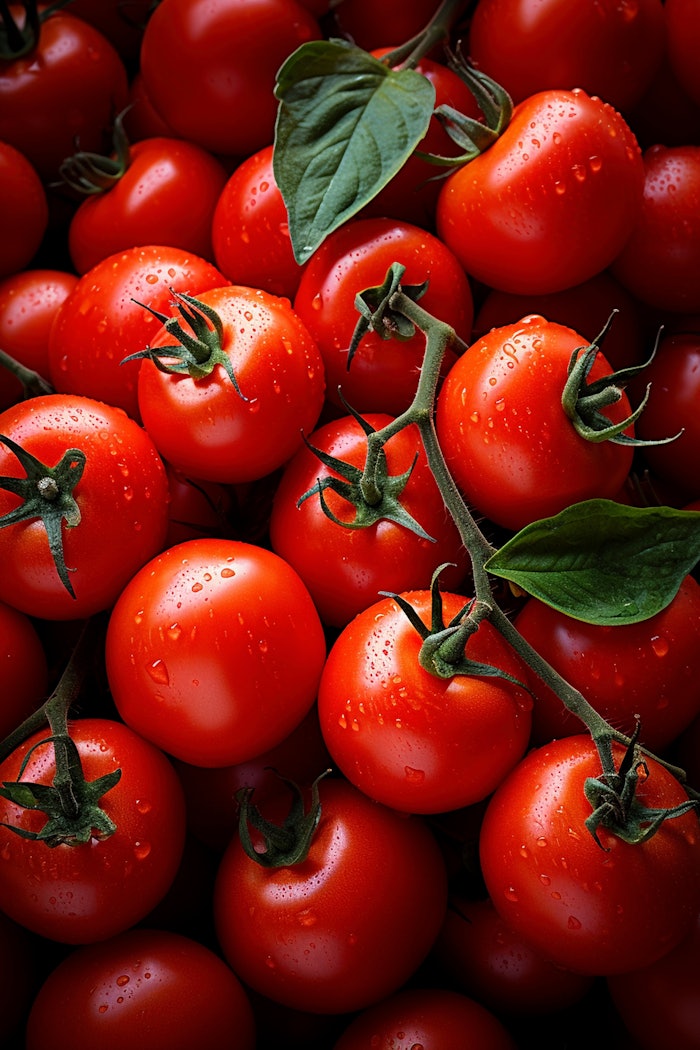
Guaiacol is one of the simplest, smoke profile, substituted phenols-2-methoxy phenol (FEMA#: 2532, CAS #: 90-05-1). It is at the heart of the impact of almost all smoke flavors. It also plays a lesser, but still important, part in a wide range of flavors that have some heated nuance within their profile.
Note that the dose rates given throughout this article are the levels suggested for use in flavors intended to be dosed at 0.05% in ready-to-drink beverages or in a simple bouillon.
Savory Flavors
Bacon: The level of smoke character in bacon flavors is widely variable. Two thousand ppm would be a reasonable level in an obviously smoked bacon flavor.
Beef: Levels also vary in beef flavors, but are generally lower. Twenty ppm would be a starting point in a subtly roasted beef flavor.
Ham: The level of smoke notes in ham flavors covers quite a wide range. Three hundred ppm represents a cautious starting point.
Olive: Olive flavors vary in character, but this raw material is almost always helpful. The level of addition is not subtle, around 200 ppm, but it does not impart obvious smoke notes.
Pepper, Jalapeno: Guaiacol adds an interesting note to all pepper flavors but it is especially useful in jalapeno pepper flavors. Twenty ppm is a subtle, but useful, level of addition.
Smoked Salmon: Levels vary with the degree of smoked character in the smoked salmon flavor. Fifty ppm is on the low side but represents a good starting point.
Smoke: Guaiacol is usually the central building block in smoke flavors. Levels vary, depending on the other phenols chosen, but 3,000 ppm is typical.
Soy Sauce: Soy sauce flavors are not typically overtly smoky, but a cautious addition of guaiacol adds authenticity to most styles. Fifteen ppm is a reasonable level of addition.
Tomato: All tomato flavors benefit from a modest addition of guaiacol. Fifty ppm is ideal for fresh tomato flavors, but the level can be doubled in flavors with a processed note.
 Levels vary with the degree of smoked character in the smoked salmon flavor.Adobe Stock
Levels vary with the degree of smoked character in the smoked salmon flavor.Adobe Stock
Brown Flavors
Chocolate and Cocoa: One hundred ppm of guaiacol adds an attractive hunt of smoke to most chocolate flavors, rising to 150 ppm in cocoa flavors.
Coffee: Medium roast coffee flavors are lifted by a medium level of guaiacol, typically around 800 ppm.
Honey: Guaiacol may seem way out of place in honey flavors, especially those with a noticeable floral connotation. Surprisingly, it does fit in, blending well with central raw materials like phenylacetic acid. Fifty ppm is a good place to start.
Licorice: Anethole is the ingredient that springs automatically to mind for licorice flavors, but guaiacol also plays an important role. Levels of 300 ppm and up are effective.
Maple Syrup: Real maple syrup is the product of a long cooking process and a modest level of this ingredient is helpful. Eighty ppm is a reasonable place to start.
Molasses and Brown Sugar: Most styles of brown sugar flavors only need a hint of guaiacol. Ten ppm works well. Molasses flavors are a little more open to higher levels, depending on the profile. Fifty ppm is a typical level.
Tea: Guaiacol should be used with care in tea flavors. A modest addition, around 10 ppm, can enhance black tea flavors. Guaiacol does really come into its own in Rooibos tea flavors, which can use at least 200 ppm to great effect.
Vanilla: The use of guaiacol in vanilla flavors is similarly a little tricky. A modest addition adds authenticity, but too much is very intrusive. In my opinion, the range from 50 ppm to 80 ppm works well in authentic vanilla bean-style flavors. This ingredient is not essential for French-style vanilla flavors, but a hint, of 40 ppm or less can be helpful.
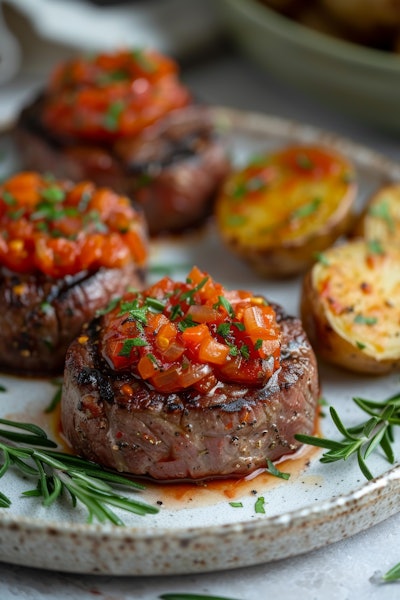 Twenty ppm would be a starting point in a subtly roasted beef flavor.Adobe Stock
Twenty ppm would be a starting point in a subtly roasted beef flavor.Adobe Stock
Nut Flavors
Hazelnut: Guaiacol plays a modest part in many nut flavors, either as part of the roasted profile or as a modifier of the core nutty notes. The ideal level in hazelnut flavors is typical, around 40 ppm.
Peanut: Levels of addition of this raw material in peanut flavors vary, starting at around 30 ppm. Higher levels work well in more roasted profiles.
Walnut: Similar levels, in the region of 50 ppm, add depth and realism to all styles of walnut flavors.50
Fermented Flavors
Beer: All fermented profiles gain from the addition of low levels of guaiacol. Part of the benefit in beer flavors is the emulation of the processing of the grain. This applies particularly to dark beers. Eighty ppm is a good level of addition.
Rum: Guaiacol contributes to rum flavors in the same way as brown sugar flavors. Levels vary with the profile, from 10 ppm upwards. Dark rum flavors may benefit from higher levels.
Tequila: Similar levels, around 10 ppm, can also contribute to tequila flavors, enhancing the aged aspects of the profile.
Whisky: The effect of guaiacol in whisky flavors depends to a large extent on the desired profile. Five ppm is a good starting point in mild, blended profiles, but higher levels work well in more aged and powerful profiles.
Wine: Much of the contribution of guaiacol in wine flavors derives from the contribution of this raw material to the cask-aged profile. Consequently, levels around 20 ppm are effective in red wine flavors, but much lower levels are better in white wine flavors.
Other Flavors
Acai: The impact of guaiacol in acai flavors has no relationship to the application of heat factor that was important in all the prior profiles. In contrast, it helps recreate the skin profile. One hundred ppm works well.
Cherry: The same comments apply to cherry flavors. The level of addition can vary radically, from 5 ppm in delicate flavors up to much higher levels in benzaldehyde-dominated creations.
Corn, Toasted: Here we obviously have a heat factor again. One hundred ppm is a reasonable starting point.
Peppermint: Realistic peppermint flavors consist of two, quite distinct, levels of raw materials. On one hand, the major ingredients, such as menthyl acetate, are often present at percentage levels. On the other hand, there is a range of trace components that, nevertheless have a big impact. Guaiacol is typical of the second group, with a level of addition of around 2 ppm.
Sesame: Sesame flavors should be noticeably smoke-tinted and 500 ppm of guaiacol is a good building block.


